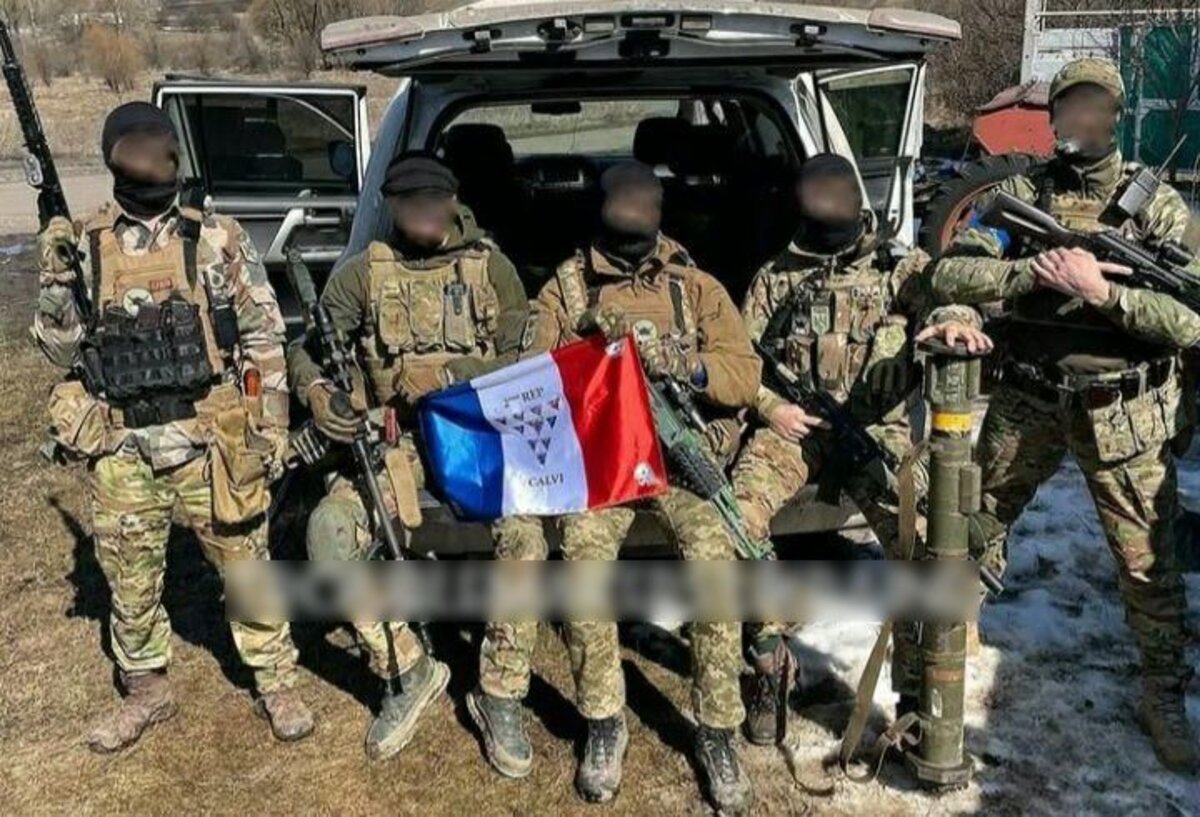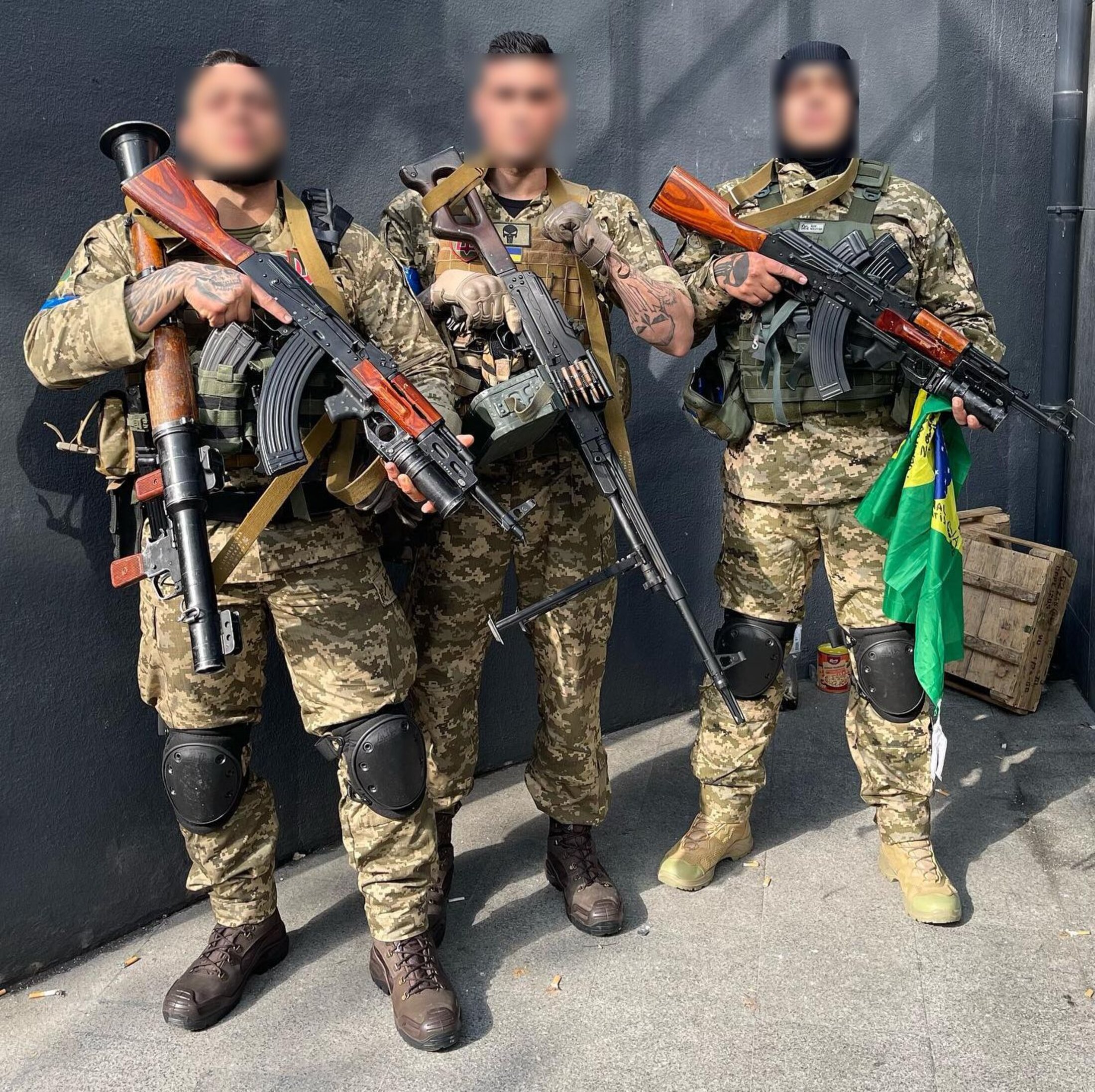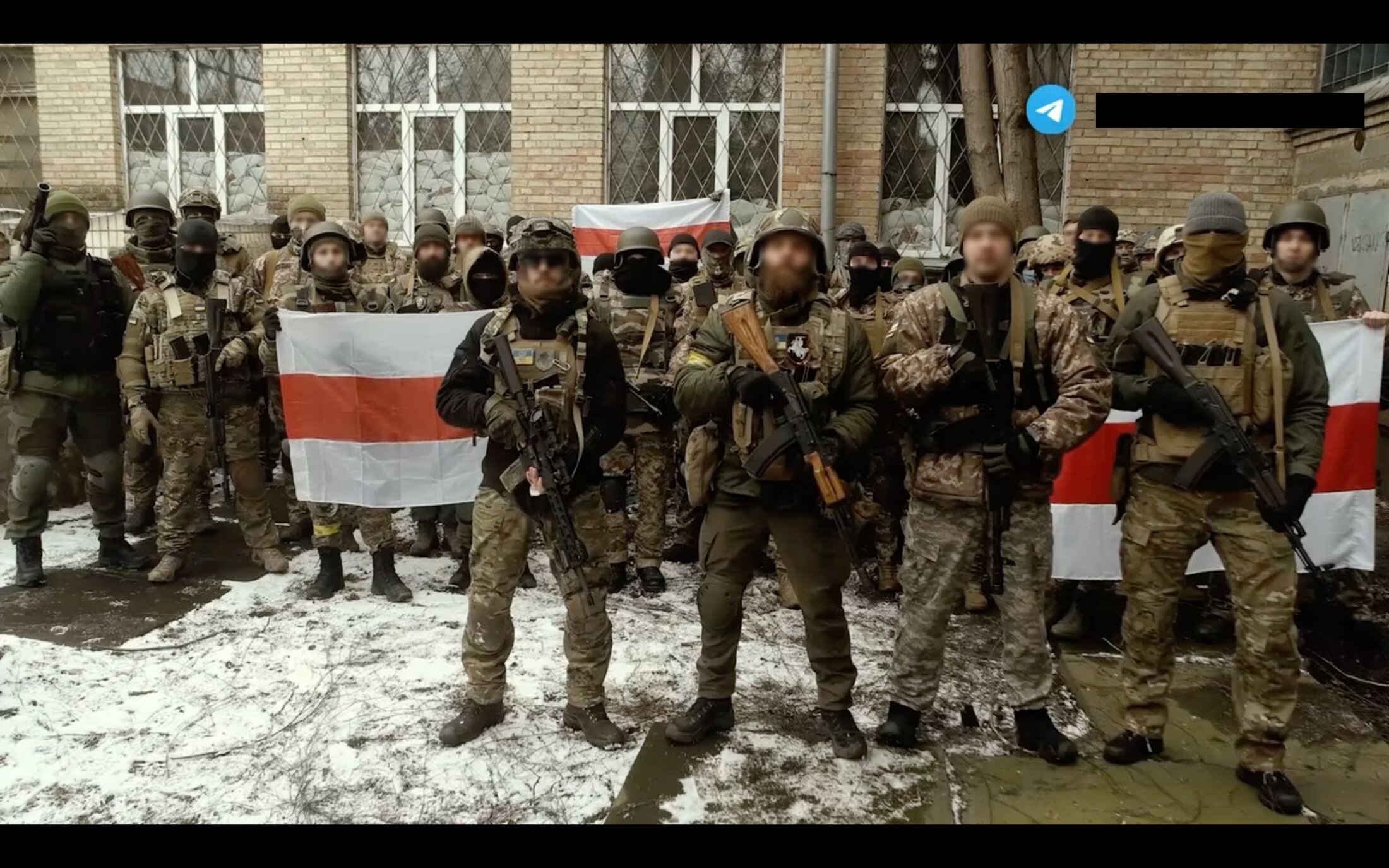On his Instagram profile 'Miguel' – not his real name – posts photos of cars, souvenirs of his travels and selfies of him smiling, some of them in the uniform of a Brazilian firefighter. On December 27th 2021 the South American posed for a photo in the Paris region, a short distance from the entrance to Fort de Nogent in the eastern suburbs of Paris, which is home to the recruitment office of the French Foreign Legion. Two months later and it was the uniform of another foreign legion that he donned in the end: the International Legion created in Ukraine for foreigners answering the appeal for help by President Volodymyr Zelensky.
The number of volunteers such as Miguel who have come to defend Ukraine can be counted in their thousands or even tens of thousands, at least according to the authorities there. During the first weeks of the conflict the Ukraine claimed that up to 20,000 men of 52 different nationalities had joined the foreign legion.
Such figures are impossible to verify and are doubtless over-estimates. But despite the questionable numbers there is no doubting that fighters are coming. Men from across the world are consulting the website created by the country's foreign ministry that gives the contact details of the 67 Ukrainian diplomatic missions where military attachés are helping would-be fighters with the necessary administrative processes they need to complete.
According to Mediapart's information, France's intelligence services have recorded a total of 450 people in France who have shown an interest in going to Ukraine. Of these some 150 have already arrived there. This figure also includes foreigners who are resident in France or those who have been in the French army. Yet whether these people have gone to fight or simply to provide humanitarian aid, they have got the French authorities worried.

Enlargement : Illustration 1

Among the fighters involved, Mediapart has been able to identify several Ukrainians who had previously served in the French Foreign Legion. This is the case with 'Viktor' – not his real name – who was in the 1st Foreign Cavalry Regiment until 2019. He was already in situ at the start of the Russian invasion and, after taking his own family to safety, he joined the Ukrainian army, as he told Mediapart by phone at the start of March.
But others, who had stayed in France until the end of their engagement with the French Foreign Legion, have also headed for Ukraine, using their military experience to defend their country of origin. Nor is this limited to Ukrainians.
Brazilians 'Pedro' and 'Eduardo' – not their real names – were also in the French Foreign Legion. The former left the Legion in around 2018 and had stayed working in the building trade. Mediapart has already described his journey to Ukraine which was documented on social networks. The latter still has a tattoo of the French Foreign Legion emblem on his forearm.
In Syria, too, people went to fight against a dictator
Pedro, Eduardo and their friend Miguel have now reached Kyiv. Images posted on their Instagram profiles show them posing, weapons in hand, with a Brazilian flag, and fighting in a wooded area.
In the International Legion the volunteers tend to stick together by nationality and create their own units. That is the case with the “Normandy Brigade” created by Canadians and also the “Kastuś Kalinoŭski Battalion” made up of Belorusians opposed to the current regime of Alexander Lukashenko. Kastuś Kalinoŭski was a 19th century writer and revolutionary who is a revered figure in the history of Belarusian nationality. This Belarusian battalion has posted lots of propaganda videos showing dozens of volunteers sporting the coat of arms and the white-red-white flag of the short-lived Belarusian People's Republic – it lasted from 1918-1919 – which has become a symbol for opponents to the current regime in Belarus.
However, one French citizen who arrived in Kyiv did not join the International Legion, which he said involved “too many constraints”. In a message to Mediapart he said: “Our goal was clear, to take part as effectively as possible in the fighting. To do that we stayed in a small group of French-speakers separate from the others. When you're fighting it helps to speak the same language.” He said that he and his comrades had fought around the capital but the few photos that he posted on social media were not enough to confirm this.

Enlargement : Illustration 2

Much of the media coverage of this influx of volunteers from across the world has drawn parallels with the International Brigades that sprang up to fight against General Franco during the Spanish Civil War in the 1930s, with clear comparisons being made between Franco and the dictator Vladimir Putin.
Yet the French authorities prefer to compare it with another and more recent episode, the war in Syria. That, too, saw young people, many of them with no knowledge of using weapons or of warfare, setting off to fight a tyrant. In that case it was the Syrian dictator Bashar al-Assad. They, too, formed units based on nationality, in fighting groups known as katibats. Some were killed but the rest became battle-hardened and after initially being members of a variety of different rebel groups, most of them ended up joining the terrorist organisation Islamic State.
Wasim Nasr, a journalist at public broadcaster France 24 who specialises in monitoring the jihadist movement, agrees there are parallels between the two conflicts. “You find the same ambiance, the same background noise. Even if, obviously, you can understand those who take up the Ukrainian cause,” he said. “Back in the day, going to fight against the 'butcher of Damascus' was also looked on favourably. Lots of people, often young, felt part of this mission. But in the end, and if you disregard the flags, what Ukraine and Syria have in common is that you have people who are going to fight in a theatre of war that they don't understand, who have no experience, and who come back with military experience and traumatised. They will have been fighting a conventional army. You don't come back from such an experience unscathed...”
The volunteers' amateurism
Mickaël Sciacca, a 40-year-old IT specialist, never reached the front line. His story, told by public broadcaster France 3, and documented online by several videos posted on his own Facebook page, almost ended less than 24 hours after his arrival in Ukraine. The military base at Yavoriv in the west of the country where he arrived was hit by missiles on Sunday March 13th. According to the Ukrainian authorities the attack killed 35 people. Visibly shocked, Mickaël filmed himself: “Look. The base has just been bombarded. We're leaving. Mates of mine are dead. We're moving back. We're out of here.”
Having survived the missile attack at Yavoriv, Mickaël returned to France. In a bizarre scene, he filmed himself crossing the Ukrainian-Polish border on the same day. Having boasted by calling himself a “war hero”, he complains as he films the long queue of people ahead of him, and then speaks ironically about the missile attack. “This morning they made some grilled food, but we weren't cooked, we mustn't have been to their taste,” he says. Nonetheless, he insisted to France 3 journalists whom he met on his return that he would return to fight if called upon by the International Legion.
The amateurism of some volunteers can be seen on social media, in particular Facebook. One young French man posted that he wanted to go to Ukraine “either to fight or to do some amateur reporting … like a war reporter”. Meanwhile one group put up as their main image a photo of French volunteers who had gone to fight in the Donbass in the east of Ukraine in 2014 … on the side of the pro-Russian separatists.
The level of amateurism shown by some has caused friction with those who claim to have a more professional background. Wahari, a Venezuelan living in Spain, went to the Ukrainian Embassy in Madrid during the first days of the war. After carrying out a few administrative steps he told Mediapart that he used his own means to get to Ukraine, driven he said by his desire to get involved and the idea of making use of the four years of military experience he had acquired in his country of origin.
Once there, he said his first task was to “go and hold the front at Kyiv”. After around ten days of intense fighting and bombardment, his group of 40 volunteers complained of problems communicating with the Ukrainian army. “We're professionals and we work like professionals and you can't fight without being organised,” he told Mediapart by phone. Wahari, who said that he had been slightly wounded in the knee, decided to turn back with around ten other volunteers. “Thirteen stayed on, the rest are dead,” he said, without giving more details. According to his account, he broke his contract with the International Legion and signed a contract with the Ukrainian army.
Some of the new arrivals who, like Wahari, were surrounded by inexperienced volunteers, have a military or at least a paramilitary background. The Asahi Shimbun newspaper reported that 40 Japanese citizens, most of them former members of Japan's defence forces, had left for Ukraine, as reported by Le Monde. The Times meanwhile reported that more than 150 former British paratroopers who had fought in Afghanistan had left for Ukraine.

Enlargement : Illustration 3

French veterans have also been heading east. 'Paul' – not his real name – told Mediapart that he had gone to Ukraine to put his “abilities” and his “knowledge” at the disposal of a “fellow country in its death throes”. On February 24th, the day of the invasion, Paul got in touch with all his contacts on Instagram and urged them to write to him, setting out his conditions: “If you have military experience (even short), if you want to help in Ukraine and if you won't give in at the first difficulty.” Paul, who describes himself as a “European nationalist”, is one of the former soldiers and serving soldiers identified by Mediapart in previous investigations over their links with neo-Nazis.
From the extreme-left to the extreme-right
According to Mediapart's information, around 100 of the 150 French fighters reported to be in Ukraine have “no known political affiliation”, around 30 are known to have extreme-right sympathies and about 15 are on the extreme-left. The proportion with political convictions could rise, however. “When people without experience go to a country at war, the longer the conflict goes on, the more the extremes increase,” said journalist Wassim Nasr. “It's one of the main lessons of the war in Syria. The more motivated, even if they are in a minority at the start, end up dominating. It's human nature...”
Since the first days of the war several members of the French intelligence services have told Mediapart about their concern about this, and they have started to monitor people, even if it is only those who organise the networks that help people go there. For example, they monitored a Facebook group which had around 3,500 members, combed through the funding which came via the French crowdfunding site Leetchi, and had kept watch near a bus that was due to drive the first volunteers to Ukraine.
However, as with the start of the war in Syria, there is one particular difficulty: as these individuals are not planning to join a terrorist organisation, their departure cannot constitute a criminal offence. And so they cannot be prevented from leaving or even be subject to police administrative measures.
Intelligence officials are now planning to keep watch on those combatants who have started returning, a process that will be based on the same model as was used with those who fought in Syria. Combatants who had fought for Islamic State or another terrorist organisation were placed under formal investigation and taken into custody. And even the young revolutionaries who had joined the Kurdish militia in the Rojava region of Syria to fight against jihadism were kept under surveillance and summoned for an interview with the French domestic security agency the DGSI. But according to one senior intelligence official there are not yet enough fighters returning to France from Ukraine for the DGSI to consider it necessary to record them.
-------------------------
If you have information of public interest you would like to pass on to Mediapart for investigation you can contact us at this email address: enquete@mediapart.fr. If you wish to send us documents for our scrutiny via our highly secure platform please go to https://www.frenchleaks.fr/ which is presented in both English and French.
-------------------------
- The original French version of this article can be found here.
English version by Michael Streeter


